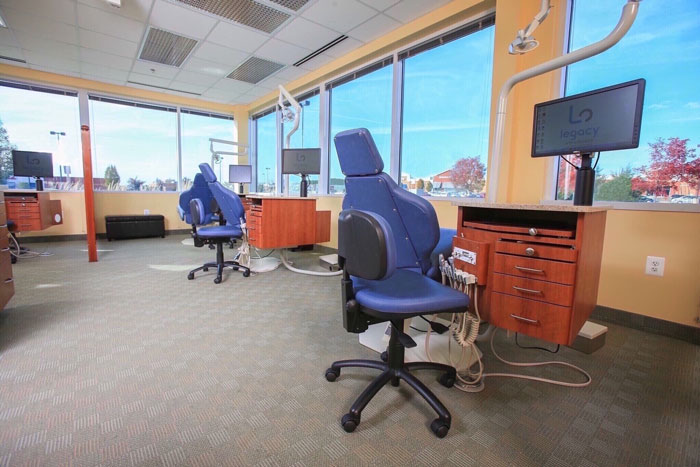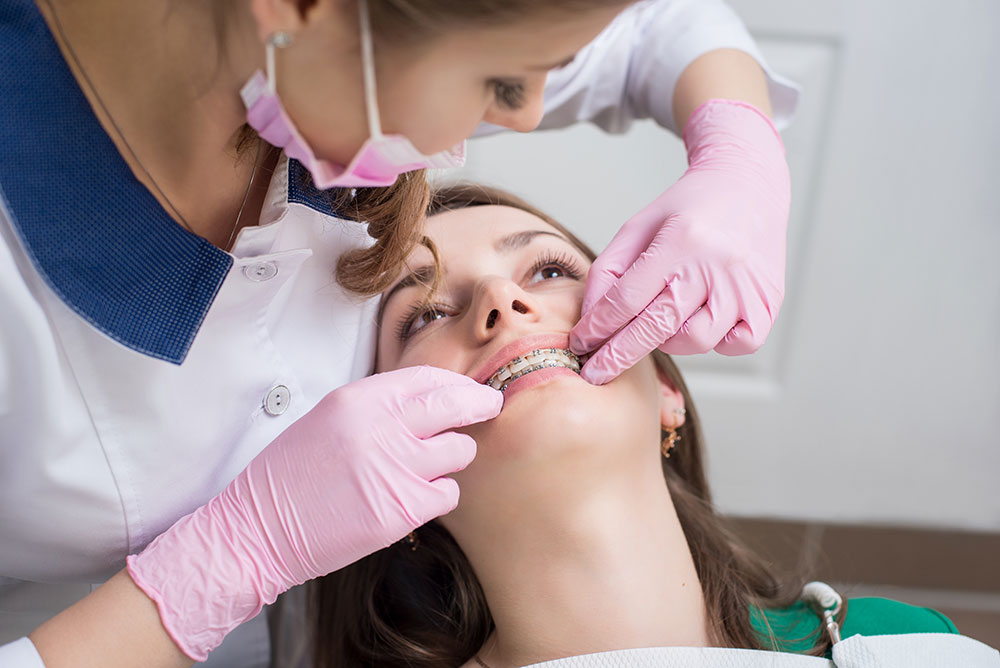Legacy Orthodontics Fundamentals Explained
Legacy Orthodontics Fundamentals Explained
Blog Article
Little Known Facts About Legacy Orthodontics.
Table of ContentsLegacy Orthodontics Fundamentals ExplainedA Biased View of Legacy OrthodonticsThe Legacy Orthodontics StatementsNot known Facts About Legacy OrthodonticsThe Basic Principles Of Legacy Orthodontics
In addition, we supply flexible therapy timetables, adaptable payment options and an enjoyable, enjoyable experience.An orthodontist is a dental professional trained to identify, avoid, and treat teeth and jaw abnormalities. Orthodontists work with people of all ages, from children to grownups.
Malocclusion, or misaligned teeth, can cause dental issues, consisting of dental caries, gum condition, and tough or uncomfortable eating. However not everybody is born with straight teeth. If you have a poor bite or big areas in between your teeth, you may want to seek advice from a dental practitioner specializing in orthodontic care.
What Does Legacy Orthodontics Do?
( Picture Credit Score: DigitalVision/Getty Images) Orthodontists utilize repaired and detachable oral devices, like dental braces, retainers, and bands, to transform the position of teeth in your mouth. Orthodontic treatment is for dental irregularities, including: Crooked teethBite problems, like an overbite or an underbiteCrowded teeth or teeth that are too much apartJaw misalignmentThe objective of orthodontic therapy is to enhance your bite.
A healthy and balanced bite guarantees you can eat, eat, and talk correctly. While you could think about orthodontists as primarily for kids or teenagers that require braces, they can deal with dental problems at any kind of age. Orthodontists go to university, dental college, and orthodontic college. After graduation, they invest 2 or 3 years in an orthodontic residency program.
All orthodontists are dentists, however not all dental practitioners are orthodontists. Orthodontic residency programs supply extensive, concentrated instruction for dental specialists. They concentrate on 2 locations: How to appropriately and securely move teeth How to effectively direct growth in the teeth, jaw, and faceOnce an orthodontist has completed training, they have the option to become board certified.
Legacy Orthodontics Fundamentals Explained
Malocclusion leads to tooth congestion, a misshapen jaw, or uneven bite patterns. Malocclusion is usually treated with: Your orthodontist affixes metal, ceramic, or plastic square bonds to your teeth.
If you have just small malocclusion, you may have the ability to use clear dental braces, called aligners, rather of standard braces (https://filesharingtalk.com/members/602554-legacyortho). Some people need a headwear to help move teeth into line with pressure from outside the mouth. After braces or aligners, you'll require to wear a retainer. A retainer is a personalized device that maintains your teeth in area.
They can develop extra area in the mouth without having to pull teeth. Orthodontists make use of wires, medical screws, or plates to sustain your jaw bone.
You might need to see an orthodontist if you have: Crowding or not adequate room for all of your teethOverbite, when your top teeth come your bottom teethUnderbite, when your base teeth are too much forwardSpacing or issues with gapsCrossbite, which is when your top teeth fit behind your base teeth when your mouth is closedOpen bite or an upright gap between your front base and upper teethMisplaced midline, when the facility of your base and top teeth don't align Fixing a dental malocclusion can: Make biting, eating, and speaking easierImprove the proportion of our face and your general appearanceEase discomfort from temporomandibular joint disordersDifferent your teeth and make them less complicated to clean, assisting protect against dental cavity or cavities It's usually a dentist that first notices misaligned teeth throughout a routine test.
Some Ideas on Legacy Orthodontics You Should Know

During your very first orthodontic assessment, you'll likely have: An oral examPhotos taken of your face and smileDental X-raysPanoramic (360 degree) X-rays of your face and headImpressions to create mold and mildews of your teethThese examinations will certainly aid your orthodontist understand how to wage your therapy. braces. An orthodontist is a dental expert that's had training to treat your teeth and jaw
Orthodontists might perform surgical treatment, exams,X-rays,and even more to help you achieve a more comfortable, healthier smile. An orthodontist is concentrated on your bite, so something like a broken tooth would be dealt with by a dental practitioner. Orthodontists are dental professionals however not all dental experts are orthodontists. Orthodontists are concentrated on your bite, or the method your teeth fit together, and the straightness of your teeth.
Ever before wondered how stars constantly appear to have perfectly straightened teeth? Orthodontists are dental specialists who focus on remedying irregularities in the teeth and jaws.
All about Legacy Orthodontics

, orthodontists have a varied toolkit at their disposal. These reliable dental braces utilize a system of brackets bonded to the teeth and linked by cords.
These detachable trays are tailor-made to gradually move the teeth's position. In cases of narrow jaws, palatal expanders can be utilized to produce area for proper tooth alignment.
Report this page